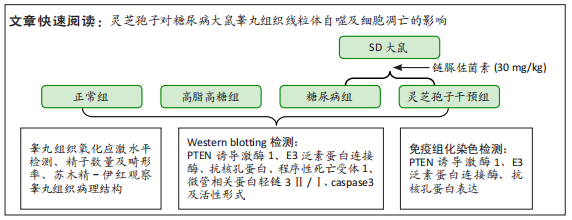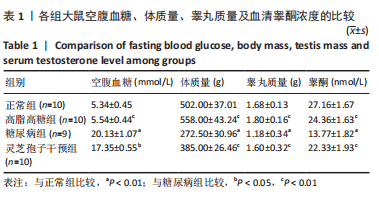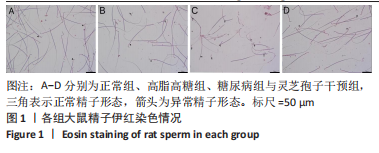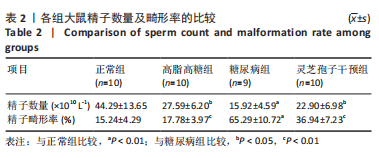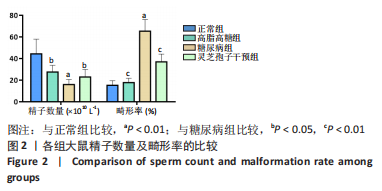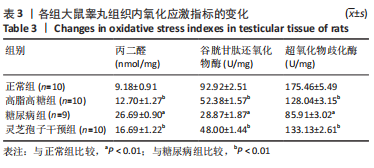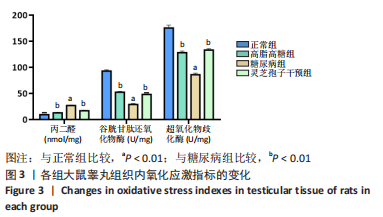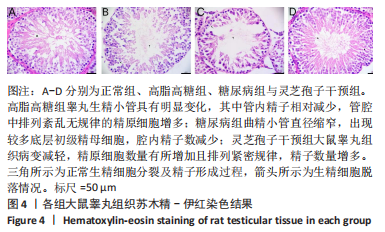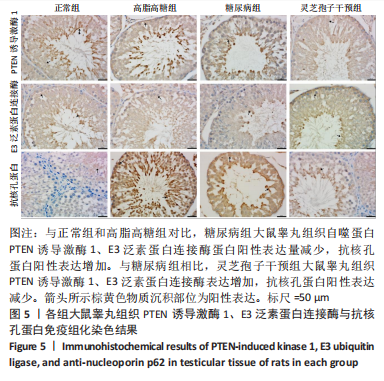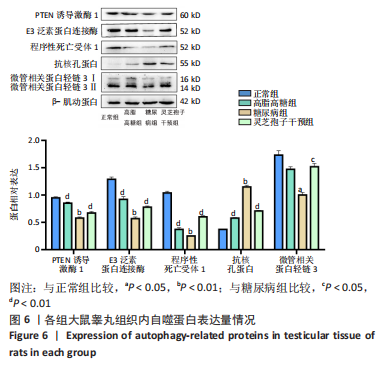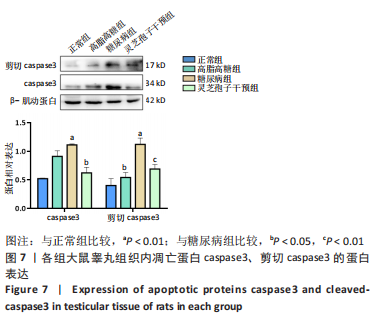[1] MEYHÖFER S, SCHMID SM. Diabeteskomplikationen-Diabetes und Nervensystem [Diabetes complications - diabetes and the nervous system]. Dtsch Med Wochenschr. 2020;145(22):1599-1605.
[2] 杨知慧,孙立丽,任晓亮.2型糖尿病危险因素研究进展[J].实用糖尿病杂志,2020,16(6): 83-84.
[3] HUANG J, YE Y, XIAO Y, et al. Geniposide ameliorates glucocorticoid-induced osteoblast apoptosis by activating autophagy. Biomed Pharmacother. 2022;155:113829.
[4] KHALIL ASM, GIRIBABU N, YELUMALAI S, et al. Myristic acid defends against testicular oxidative stress, inflammation, apoptosis: Restoration of spermatogenesis, steroidogenesis in diabetic rats. Life Sci. 2021;278: 119605.
[5] YUN HR, JO YH, KIM J, et al. Roles of Autophagy in Oxidative Stress. Int J Mol Sci. 2020;21(9):3289.
[6] HAN YC, TANG SQ, LIU YT, et al. AMPK agonist alleviate renal tubulointerstitial fibrosis via activating mitophagy in high fat and streptozotocin induced diabetic mice. Cell Death Dis. 2021;12(10):925.
[7] TONG M, SAITO T, ZHAI P, et al. Mitophagy Is Essential for Maintaining Cardiac Function During High Fat Diet-Induced Diabetic Cardiomyopathy. Circ Res. 2019;124(9):1360-1371.
[8] ANSARI MY, KHAN NM, AHMAD I, et al. Parkin clearance of dysfunctional mitochondria regulates ROS levels and increases survival of human chondrocytes. Osteoarthritis Cartilage. 2018;26(8):1087-1097.
[9] YAMASHITA A, MATSUOKA Y, MATSUDA M, et al. Dysregulation of p53 and Parkin Induce Mitochondrial Dysfunction and Leads to the Diabetic Neuropathic Pain. Neuroscience. 2019;416:9-19.
[10] SU L, LI D, SU J, et al. Polysaccharides of Sporoderm-Broken Spore of Ganoderma lucidum Modulate Adaptive Immune Function via Gut Microbiota Regulation. Evid Based Complement Alternat Med. 2021;2021:8842062.
[11] FANG L, ZHAO Q, GUO C, et al. Removing the sporoderm from the sporoderm-broken spores of Ganoderma lucidum improves the anticancer and immune-regulatory activity of the water-soluble polysaccharide. Front Nutr. 2022;9:1006127.
[12] SHAHER F, WANG S, QIU H, et al. Effect and Mechanism of Ganoderma lucidum Spores on Alleviation of Diabetic Cardiomyopathy in a Pilot in vivo Study. Diabetes Metab Syndr Obes. 2020;13:4809-4822.
[13] ZHANG W, LEI Z, MENG J, et al. Water Extract of Sporoderm-Broken Spores of Ganoderma lucidum Induces Osteosarcoma Apoptosis and Restricts Autophagic Flux. Onco Targets Ther. 2019;12:11651-11665.
[14] LI D, GAO L, LI M, et al. Polysaccharide from spore of Ganoderma lucidum ameliorates paclitaxel-induced intestinal barrier injury: Apoptosis inhibition by reversing microtubule polymerization. Biomed Pharmacother. 2020;130:110539.
[15] JIAO C, CHEN W, TAN X, et al. Ganoderma lucidum spore oil induces apoptosis of breast cancer cells in vitro and in vivo by activating caspase-3 and caspase-9. J Ethnopharmacol. 2020;247:112256.
[16] LIU Q, TIE L. Preventive and Therapeutic Effect of Ganoderma (Lingzhi) on Diabetes. Adv Exp Med Biol. 2019;1182:201-215.
[17] CAO Y, XU X, LIU S, et al. Ganoderma: A Cancer Immunotherapy Review. Front Pharmacol. 2018;9:1217.
[18] CAI M, LIANG X, LIU Y, et al. Transcriptional Dynamics of Genes Purportedly Involved in the Control of Meiosis, Carbohydrate, and Secondary Metabolism during Sporulation in Ganoderma lucidum. Genes (Basel). 2021;12(4):504.
[19] HE Z, YIN G, LI QQ, et al. Diabetes Mellitus Causes Male Reproductive Dysfunction: A Review of the Evidence and Mechanisms. In Vivo. 2021; 35(5):2503-2511.
[20] WU C, LI Y, ZHONG S, et al. ROS is essential for initiation of energy deprivation-induced autophagy. J Genet Genomics. 2021;48(6):512-515.
[21] SOLGI T, AMIRI I, ASL SS, et al. Antiapoptotic and antioxidative effects of cerium oxide nanoparticles on the testicular tissues of streptozotocin-induced diabetic rats: An experimental study. Int J Reprod Biomed. 2021;19(7):589-598.
[22] WIBLE DJ, BRATTON SB. Reciprocity in ROS and autophagic signaling. Curr Opin Toxicol. 2018;7:28-36.
[23] YUAN Y, CHEN Y, PENG T, et al. Mitochondrial ROS-induced lysosomal dysfunction impairs autophagic flux and contributes to M1 macrophage polarization in a diabetic condition. Clin Sci (Lond). 2019;133(15):1759-1777.
[24] TIAN Y, SONG W, XU D, et al. Autophagy Induced by ROS Aggravates Testis Oxidative Damage in Diabetes via Breaking the Feedforward Loop Linking p62 and Nrf2. Oxid Med Cell Longev. 2020;2020:7156579.
[25] MAO H, CHEN W, CHEN L, et al. Potential role of mitochondria-associated endoplasmic reticulum membrane proteins in diseases. Biochem Pharmacol. 2022;199:115011.
[26] GUO T, LIU T, SUN Y, et al. Sonodynamic therapy inhibits palmitate-induced beta cell dysfunction via PINK1/Parkin-dependent mitophagy. Cell Death Dis. 2019;10(6):457.
[27] HUANG C, BIAN J, CAO Q, et al. The Mitochondrial Kinase PINK1 in Diabetic Kidney Disease. Int J Mol Sci. 2021;22(4):1525.
[28] XIAO B, GOH JY, XIAO L, et al. Reactive oxygen species trigger Parkin/PINK1 pathway-dependent mitophagy by inducing mitochondrial recruitment of Parkin. J Biol Chem. 2017;292(40):16697-16708.
[29] ZHOU P, XIE W, MENG X, et al. Notoginsenoside R1 Ameliorates Diabetic Retinopathy through PINK1-Dependent Activation of Mitophagy. Cells. 2019;8(3):213.
[30] LI W, DU M, WANG Q, et al. FoxO1 Promotes Mitophagy in the Podocytes of Diabetic Male Mice via the PINK1/Parkin Pathway. Endocrinology. 2017;158(7):2155-2167.
[31] GLADKOVA C, MASLEN SL, SKEHEL JM, et al. Mechanism of parkin activation by PINK1. Nature. 2018;559(7714):410-414.
[32] WANG B, SHI Y, CHEN J, et al. High glucose suppresses autophagy through the AMPK pathway while it induces autophagy via oxidative stress in chondrocytes. Cell Death Dis. 2021;12(6):506.
[33] YOU S, ZHENG J, CHEN Y, et al. Research progress on the mechanism of beta-cell apoptosis in type 2 diabetes mellitus. Front Endocrinol (Lausanne). 2022;13:976465.
[34] XI J, RONG Y, ZHAO Z, et al. Scutellarin ameliorates high glucose-induced vascular endothelial cells injury by activating PINK1/Parkin-mediated mitophagy. J Ethnopharmacol. 2021;271:113855.
[35] GREEN DR. The Death Receptor Pathway of Apoptosis. Cold Spring Harb Perspect Biol. 2022;14(2):a041053.
[36] HAM J, LIM W, SONG G. Pendimethalin induces apoptosis in testicular cells via hampering ER-mitochondrial function and autophagy. Environ Pollut. 2021;278:116835. |
